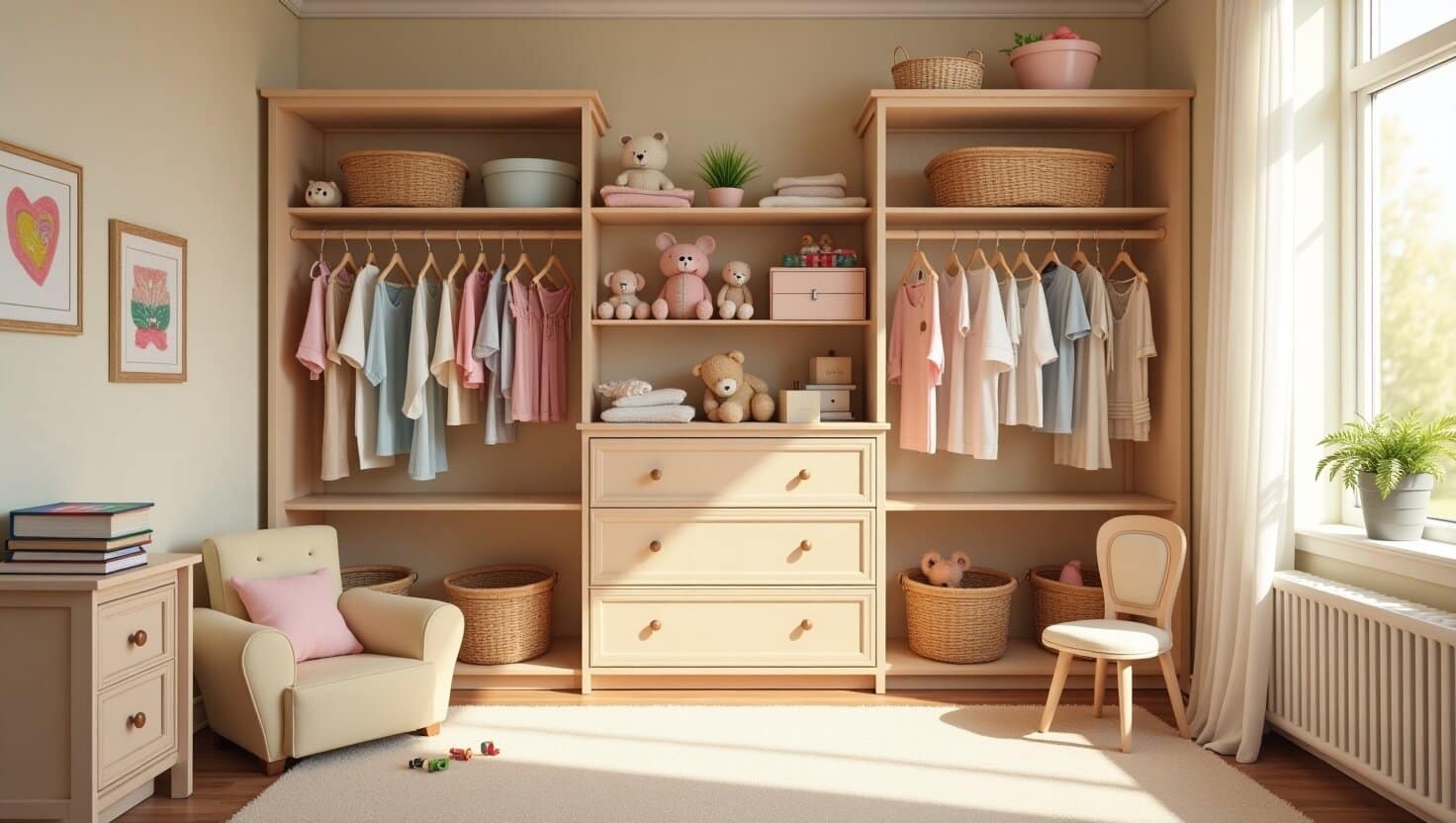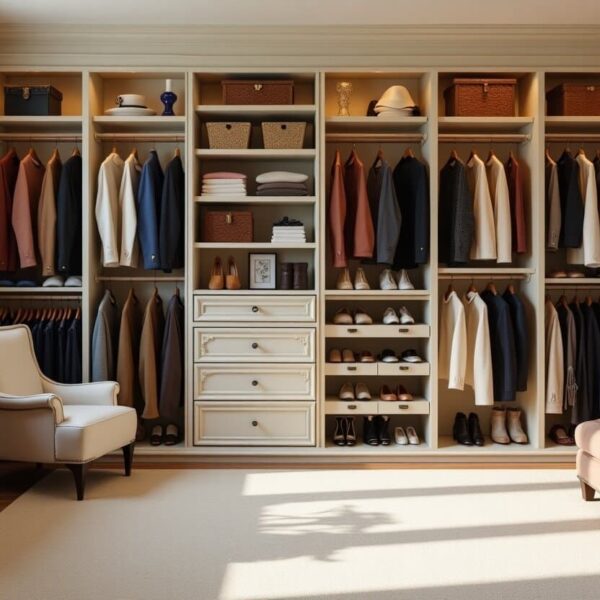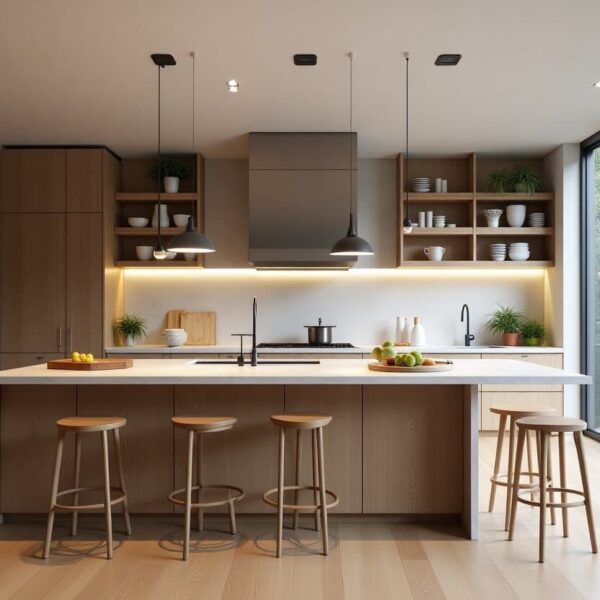Is your child’s wardrobe always messy, hard to access, or outgrown within a year or two? You’re not alone.
Children grow fast. And as they do, their storage needs shift dramatically — from soft onesies to tiny school uniforms, from plush toys to electronic gadgets. Unfortunately, most wardrobes aren’t designed to evolve with them.And worse—some are unsafe. Sharp corners, unstable structures, toxic materials—these risks are real.
This blog will guide you through designing a safe, fun, and flexible custom wardrobe that truly grows with your child—and why working with a Chinese custom wardrobe maker is your smartest move.
Why a Child's Wardrobe Needs a Special Touch
Children grow faster than we can imagine, and it’s not just their height and size that change. Their habits, routines, and personalities are constantly evolving too. A wardrobe that was perfectly practical for a two-year-old might be completely unsuitable by the time they turn four. The types of clothes they wear, the way they need to be stored, and how your child interacts with their space are all in constant flux. Standardized wardrobe designs can often only meet the needs of one particular stage, quickly becoming inadequate.
Safety is another critical reason why children’s wardrobes demand specialized design. Children pull, climb, and lean on furniture; their behavior patterns are different from adults’. They are filled with curiosity, so their environment must be designed to protect them from bumps, pinches, and falls.
Beyond mere protection, a great children’s wardrobe should also be engaging and fun. Wardrobes with interactive designs, such as personalized handles, chalkboard panels for drawing, or color-coded sections, can ignite a child’s interest in their storage space. This encourages them to participate in organizing and helps build a sense of responsibility. A space that children genuinely love is far more likely to be a space they are willing to maintain.
Most importantly, a custom wardrobe brings all these advantages together. You can flexibly tailor every inch of space to your child’s age, interests, daily habits, and even the room’s layout. Whether it’s maximizing space in a small room or meticulously planning for multi-stage growth, a well-designed custom wardrobe can truly grow with your child, bringing a more relaxed, safe, and enjoyable living experience to your family.

Safety By Design
When designing a children’s wardrobe, safety must be the absolute priority. The primary focus should be on physical safety. Wardrobes that incorporate rounded edges, soft finishes, and wall-anchoring devices can effectively prevent bumps, falls, and tipping hazards. Even a drawer pull can pose a risk if made from sharp metal or glass. In contrast, opting for soft or recessed handles, such as those made from ABS resin instead of metal or glass, is a far safer choice, eliminating any potential points of harm.
Of course, safety isn’t just about structural design; material safety is equally crucial. Many traditional boards can release formaldehyde or VOCs (Volatile Organic Compounds), harmful gases that are extremely detrimental to children’s health. It’s essential to prioritize E0 or ENF grade low-emission boards paired with food-grade water-based paints, ensuring they are non-toxic even if a child bites or mouths them. If your child has sensitivities or if your home is in a high-humidity area, using moisture-proof and anti-mold cabinet materials is also vital to prevent mildew growth and allergen accumulation.
Finally, there’s an often-overlooked but equally important aspect: motion control safety. Wardrobes equipped with soft-close hinges and hidden drawer slides can effectively prevent little fingers from getting pinched. Cabinet doors should have a limited opening angle, ideally restricted to ≤90 degrees, to prevent children from opening them too forcefully and causing injury. Additionally, the wardrobe interior should feature good ventilation design, particularly in areas a child might access, ensuring air circulation to reduce the risk of suffocation or other accidents. A thoughtfully designed children’s wardrobe provides peace of mind for parents and allows children to use it comfortably and safely, transforming daily tidying into a secure and pleasant experience.
Stage-by-Stage Transformation
| Stage | Key Feature | Functionality Highlights |
|---|---|---|
| Infant (0–1) | Low changing table + visual stimulation | Easy diaper changing + sensory input |
| Toddler (1–3) | Open drawers for training pants + mini mirror | Independence building |
| Preschool (3–6) | Labeled zones for uniforms, toys | Habit formation |
| Child (6–12) | Fold-out study table + rotating accessories | Lifestyle flexibility |
| Teen (13–18) | Device dock, stylable panels | Personality + tech-ready |
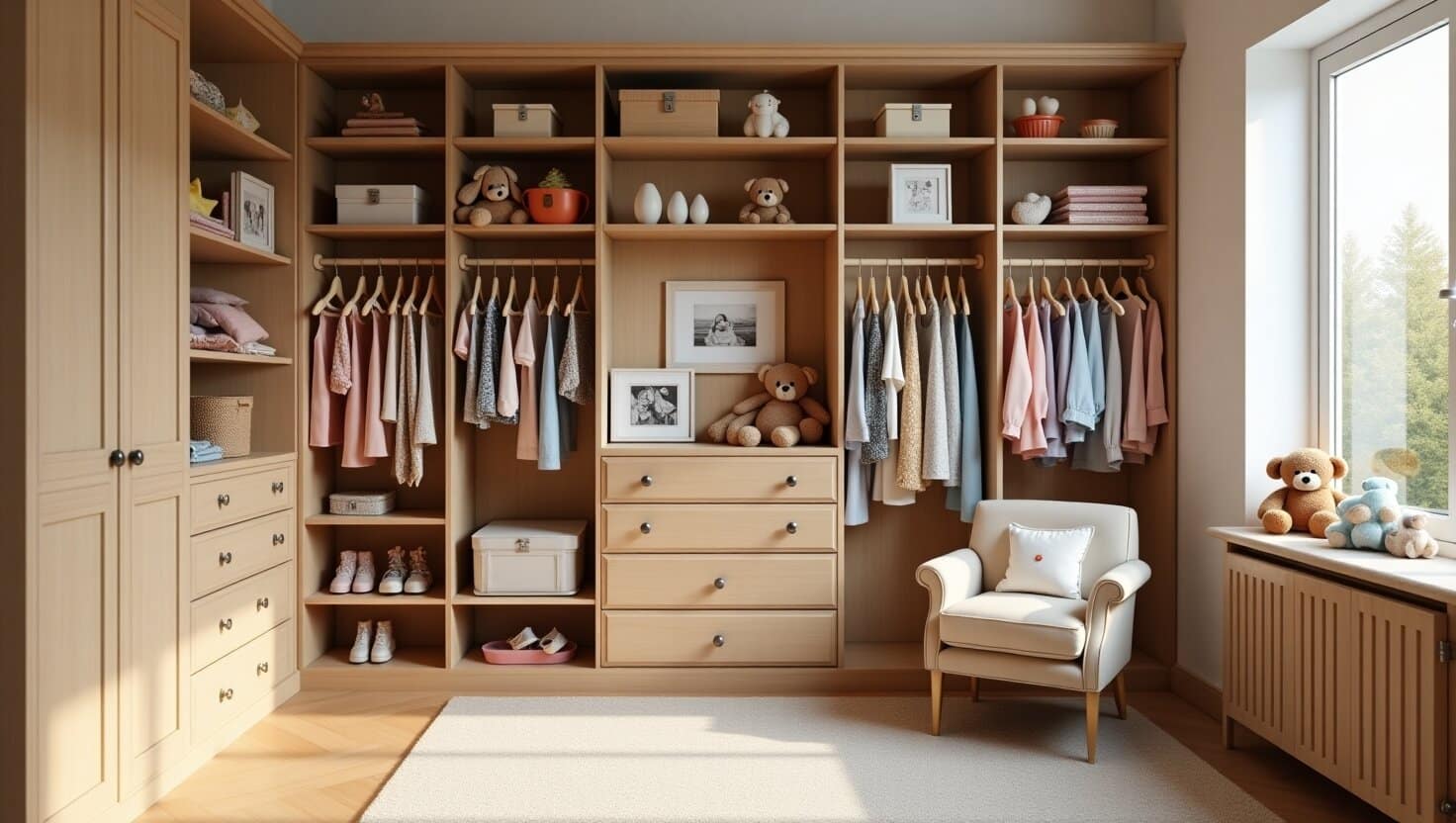
Smart Custom Wardrobe Features You’ll Love
Beyond safety and the distinct needs of each growth stage, a child’s wardrobe should anticipate change, adapt to varying demands, and evolve right alongside them. Among the many ingenious designs, the dual-hanging rod system remains a top favorite. A lower rod, around 60cm high, is perfect for 3-6 year olds to independently reach and hang their clothes, fostering early self-sufficiency. An upper rod, 120cm high, can be reserved for parents’ use initially and then for longer clothes as your child grows, ensuring long-term utility.
Shelf flexibility is another key element. Opting for a 5cm spaced pre-drilled hole design allows you to freely adjust shelf heights, maximizing space for diverse items ranging from folded clothes to toys and books. Similarly, movable dividers empower you to easily reconfigure storage partitions, adapting to seasonal changes or evolving needs.
Have a project in mind? Send a message.
Get the catalog for free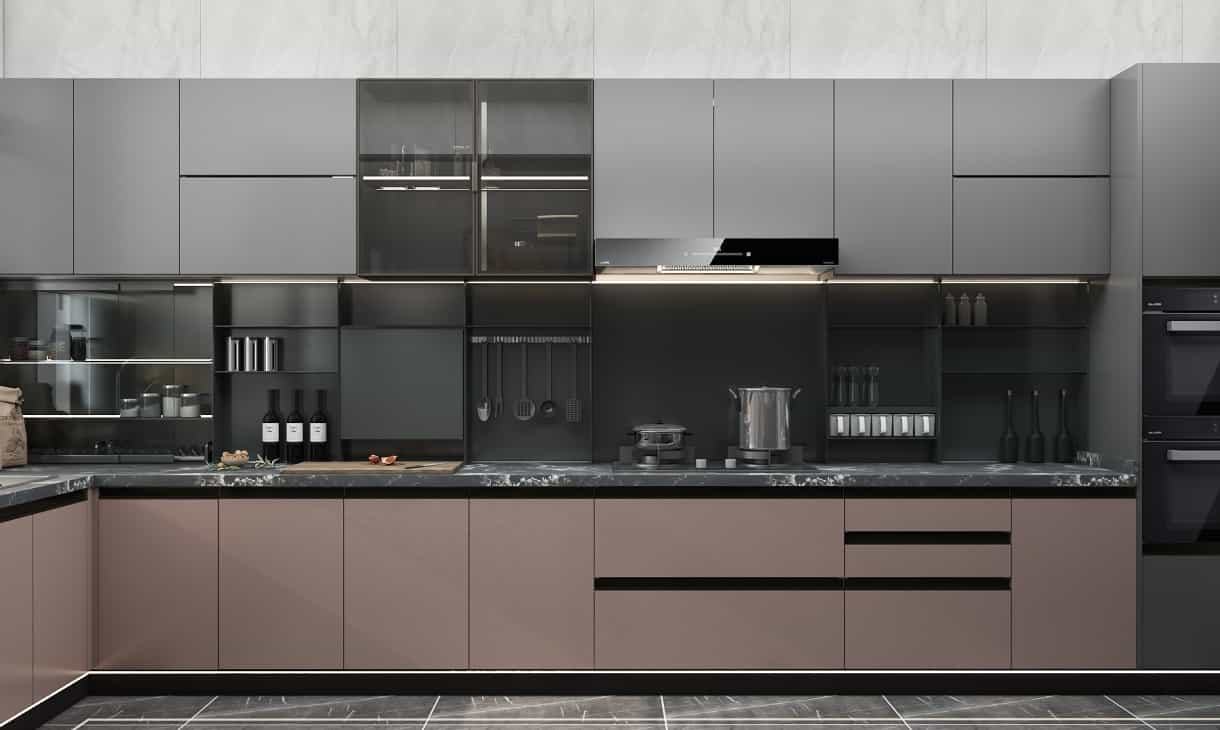
Furthermore, expandable accessories feature parents’ high value. Modular components like sliding drawers, detachable trouser racks, and adjustable hooks allow the wardrobe’s internal layout to be freely reconfigured without needing structural modifications. This highly modular design not only meets a child’s current storage habits but also leaves ample room for future changes.
In terms of space planning, reserving room is a smart move. It’s advisable to always keep about 20% of the wardrobe space empty. This buffer is crucial for accommodating future clothing growth, new hobbies, or sudden storage needs. The top section can be designated as a seasonal storage area, paired with dust covers or storage boxes, keeping daily use areas neat, organized, and easy to manage.
Finally, for the long run, we recommend considering structural compatibility and a neutral style. The wardrobe should be designed with removable child shelves so it can easily transform into a bookshelf or display unit later on. Standardized track spacing also ensures compatibility with various mainstream accessory suppliers, providing future flexibility. Aesthetically, choose a basic color scheme for the cabinet, such as classic white, natural wood, or light gray. These timeless colors serve as a versatile base that can easily be updated with playful elements like curtains or stickers, allowing the wardrobe’s style to evolve as gracefully as your child does, without requiring a major renovation.
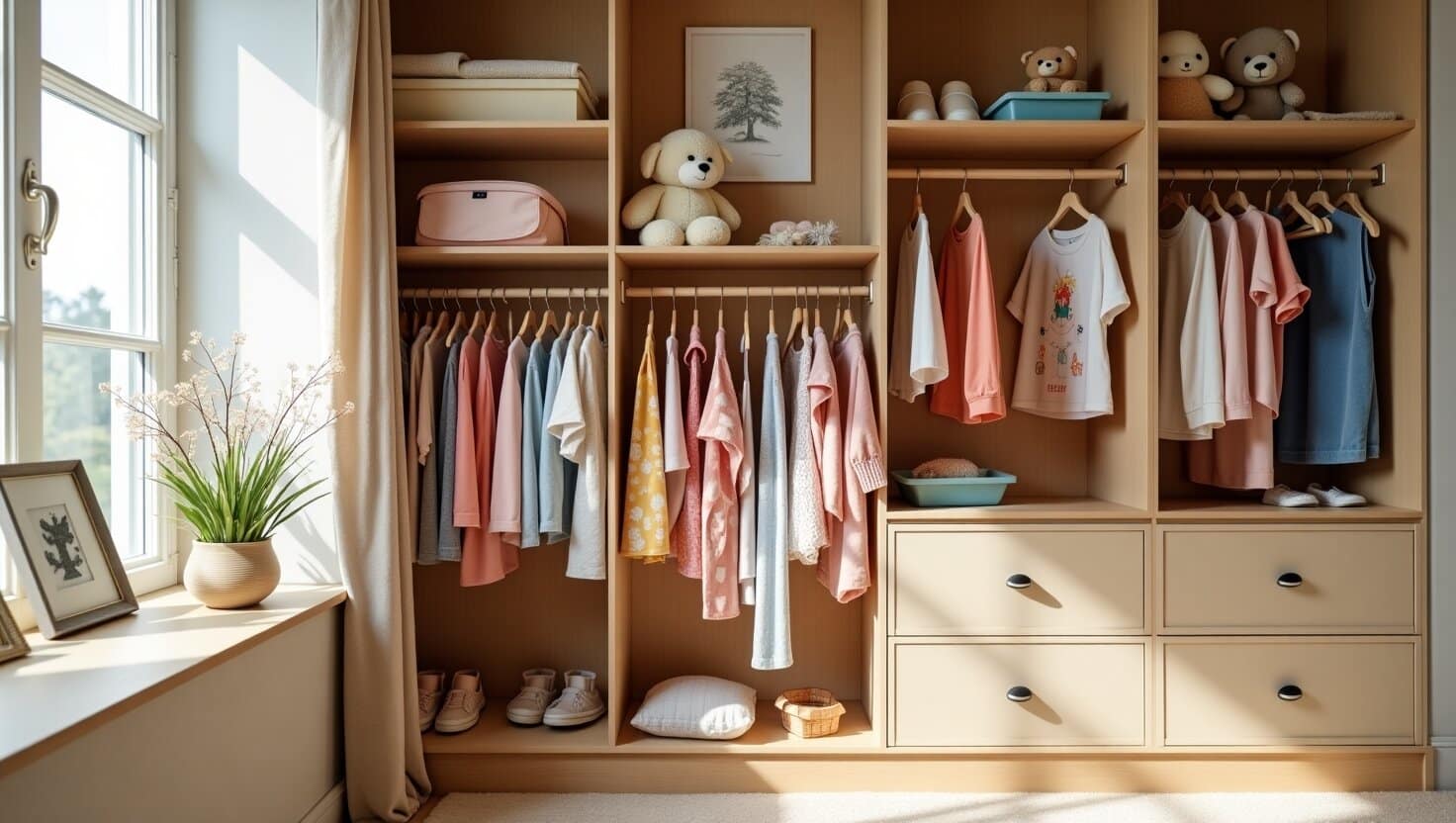
Make It Fun for Kids, Too
Designing a truly child-friendly wardrobe isn’t just about storage; it’s about creating a space kids want to interact with and genuinely enjoy. If a wardrobe feels too cold, too “adult,” or simply lacks personality, children will instinctively shy away from it. Conversely, incorporating playful elements can spark their curiosity, encourage responsibility, and foster good organizing habits.
Visual guidance is an incredibly practical way to help kids connect with their storage space. For young children who can’t read yet, images and colors are far easier to understand than words. Sticking clothing icons – like a T-shirt graphic or a sock drawing – on drawers or shelves allows children to instantly know where items belong, without needing a parent’s prompt. Using color-coded zones, for instance, blue for pants and red for tops, can also transform tidying into a fun “color-matching” game.
Beyond clear labeling, gamified storage can turn everyday tasks into exciting challenges. Think about a basketball hoop-style laundry hamper, which transforms tossing dirty clothes into an enjoyable mini-game. You could even introduce timed organizing challenges, perhaps with a built-in timer, making tidying up a quick and thrilling race against the clock.
Themed scene design within the wardrobe can further ignite a child’s imagination and engagement. Consider painting the inside of a cabinet door with chalkboard paint, giving your child a personal space to doodle, write notes, or jot down outfit ideas. Sticking a height chart on the back of a door is another delightful, integrated way to track their growth and create cherished memories.
Children also crave a sense of “ownership.” Strategically placing open display spaces, like shelves or cubbies, allows them to showcase beloved toys, books, or awards. This not only adds a touch of fun but subtly encourages kids to organize and proudly display their belongings. The wardrobe then transcends being just a hidden clutter zone behind closed doors; it becomes an open, autonomous display corner—an extension of their personality and interests.
Common Parent Questions
- Q1: “How do I know when it’s time to transition to the next stage?”
A: A good rule of thumb is when your child struggles to reach items on tiptoes, or when your storage space is consistently below 30% capacity. - Q2: “Will modifications damage the existing structure?”
A: Not with a well-designed custom wardrobe! Our pre-reserved interface designs allow for non-destructive upgrades, so you can adapt without fear of damage. - Q3: “How soon after installation can we move in? (Regarding ventilation/odor)”
A: Ventilation time varies by base material. For solid wood multi-layer boards, 2-4 weeks of good ventilation may suffice. However, for sensitive individuals, we recommend at least 4 weeks to ensure optimal air quality.
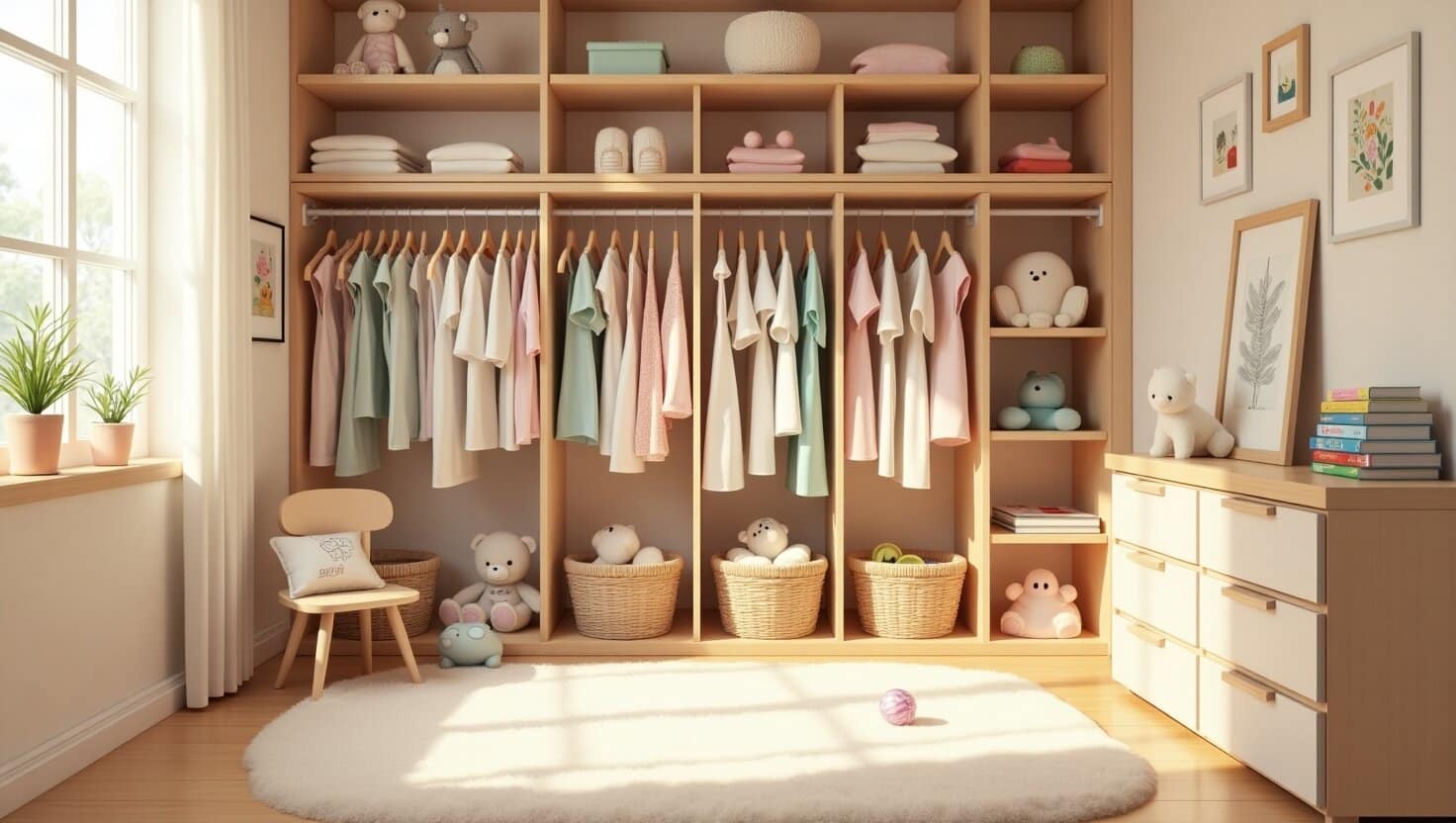
Why Choose Nexthome Furnishing?
Designing a wardrobe that truly evolves with your child is an art and a science. It’s an investment in their space and their development. As we like to say, “A good wardrobe isn’t just a storage container; it’s a growth partner that nurtures a child’s sense of responsibility and creativity—from their first time hanging up a coat to planning their exclusive little space, every step lays the foundation for an independent personality.” And this level of precision and adaptability is why custom wardrobes are the only real solution.
At Nexthome Furnishing, we understand this deeply. With over 10 years of export experience, we are a professional Chinese wardrobe manufacturer dedicated to crafting solutions that last. Our children’s wardrobe designs seamlessly combine unparalleled safety, playful aesthetics, and truly adjustable structures, embodying the “grows with you” concept.
Whether you’re a discerning homeowner, an innovative interior designer, or a project client, we offer flexible custom wardrobe and OEM services tailored to meet the unique and evolving needs of every growth stage. When you choose custom wardrobes from China with Nexthome Furnishing, you’re not just getting furniture; you’re getting a partnership for growth.
Contact NextHome Now!
We are here to help you with your business needs. We have a team of experts who are always eager to help you.

